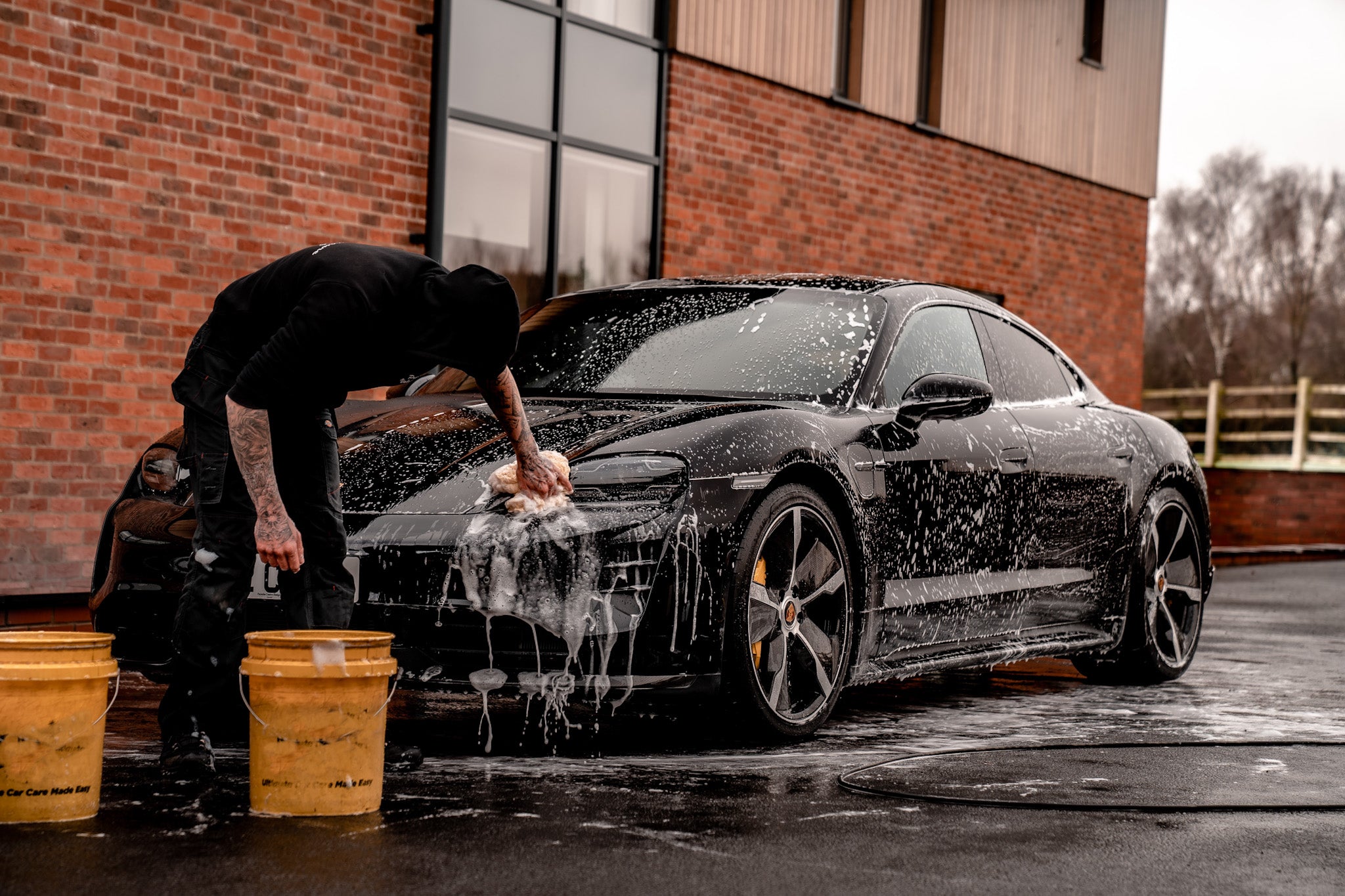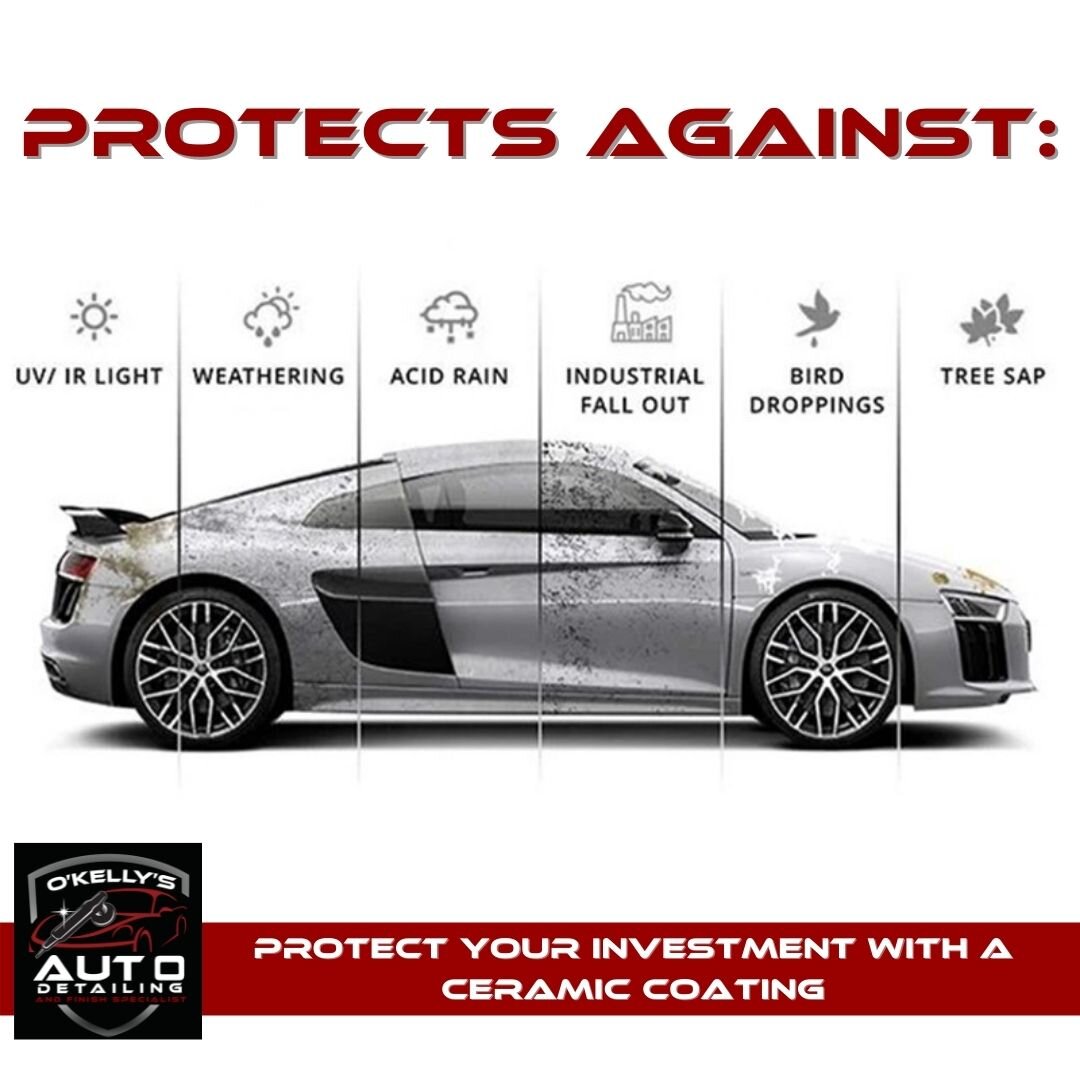Leading Ceramic Coatings San Jose to Safeguard Your Automobile's Paint
Leading Ceramic Coatings San Jose to Safeguard Your Automobile's Paint
Blog Article
Introducing the Science Behind Ceramic Coatings: How Does It Job and Why Is It Above Standard Alternatives?
Ceramic coverings have actually been getting appeal in different industries for their extraordinary efficiency and toughness. Recognizing how ceramic finishes job and why they exceed conventional choices is crucial for those looking for to improve the durability and strength of their materials.
The Chemistry of Ceramic Coatings
In recognizing ceramic coatings, delving right into the complex chemistry behind their composition is essential for understanding their performance and toughness. Ceramic layers are primarily made up of silicon dioxide (SiO2), which develops a solid and safety layer when applied to numerous surfaces. This chemical framework provides extraordinary resistance to warmth, chemicals, and rust, making ceramic layers very demanded for a large range of applications.
The chemistry behind ceramic finishings entails the development of covalent bonds between silicon and oxygen atoms, creating a rigid network that improves the coating's durability and durability. Furthermore, the presence of other aspects such as light weight aluminum, titanium, and zirconium further improves the coating's residential or commercial properties, using raised hardness and bond to surface areas.
Recognizing the chemical composition of ceramic finishes enables the customization of formulas to match details demands, whether it be for automotive, industrial, or domestic purposes. By taking advantage of the power of chemistry, ceramic layers proceed to pave the way for superior defense and efficiency in various sectors.
Advantages of Ceramic Coatings

As a result, ceramic finishings make cleaning and maintaining surfaces a lot simpler and less lengthy. Overall, the wide variety of advantages offered by ceramic coatings make them an exceptional choice contrasted to conventional layer methods.
How Ceramic Coatings Bond
Ceramic finishes bond to surface areas via a procedure that involves molecular adhesion and chemical interactions. When a ceramic finishing is put on a surface area, it develops a solid bond by chemically sticking to the surface area at a molecular degree. This bond is produced with the formation of covalent bonds, which are very solid and long lasting. The ceramic finish's particles pass through the pores of the surface area, developing a limited hold that resists separation.
Additionally, the chemical interactions between the ceramic coating and the surface area better boost the bond. ceramic coatings san jose. These interactions allow the ceramic coating to develop a seamless and constant layer externally, offering exceptional defense and sturdiness. Unlike standard coverings that may rest on the surface without totally bonding, ceramic finishings create a permanent bond that is resistant to chemicals, UV rays, and extreme environmental conditions

In significance, the bonding mechanism of ceramic finishings makes sure a reliable and durable safety layer that outmatches typical finish choices. This premium bond adds to the resilience, scratch resistance, and longevity of why not check here ceramic layers, making them a recommended choice for numerous applications.
Sturdiness of Ceramic Coatings
The extraordinary long life of ceramic finishes comes from their durable molecular bond and chemical communications with surfaces, making sure a resilient safety layer that exceeds typical finishing choices. Once used, ceramic coatings create a solid bond with the substrate, developing a resilient barrier versus various environmental stress factors such as UV radiation, chemicals, and abrasions. This bond is so safe and secure that it can endure the roughness of daily usage without deteriorating or deteriorating swiftly.
Unlike conventional finishings that may deteriorate over time, ceramic layers keep their honesty for an extensive duration, offering durable defense for the underlying surface. In general, the exceptional toughness of ceramic finishings makes them an exceptional selection for safeguarding a vast array of surfaces in different applications.
Ceramic Coatings Vs. Standard Options
In comparison to traditional layer techniques, ceramic coatings provide an unique blend of toughness and protective abilities that set them apart in numerous surface area protection applications. Standard options visit this site such as wax or sealers supply a temporary layer of protection that can put on off swiftly, needing regular reapplication. On the various other hand, ceramic finishes create a solid bond with the surface, creating a long-term or semi-permanent obstacle that is extremely resistant to abrasion, chemicals, UV rays, and extreme temperature levels.
Furthermore, ceramic finishes provide remarkable hydrophobic residential properties compared to conventional coatings. The hydrophobic nature of ceramic coverings causes water to grain up and roll off the surface area, carrying dust and pollutants with it. This self-cleaning impact helps to keep the surface area's cleanliness and gloss for extended durations, decreasing the need for constant upkeep.
Additionally, ceramic layers have a thicker layer contrasted to conventional options, giving enhanced scrape resistance and defense versus small effects. This toughness ensures resilient performance and assists preserve the visual appeal of the dealt with surface for an extensive period.
Conclusion
To conclude, the science behind ceramic coverings hinges on their chemical composition and bonding residential or commercial properties, making them above standard important source options. The advantages of ceramic coatings include raised sturdiness and defense for surface areas. By understanding just how ceramic coatings job and their advantages over standard options, one can make informed choices when taking into consideration layer options for different applications.
Unlike standard coatings that might rest on the surface without completely bonding, ceramic finishings develop a permanent bond that is resistant to chemicals, UV rays, and rough environmental conditions.
The remarkable durability of ceramic layers stems from their robust molecular bond and chemical interactions with surface areas, ensuring a sturdy protective layer that goes beyond typical covering options.Unlike standard finishings that may weaken over time, ceramic finishings preserve their integrity for an extended duration, providing resilient protection for the underlying surface.In comparison to traditional coating approaches, ceramic coverings use a distinctive blend of resilience and protective capabilities that establish them apart in numerous surface defense applications. By comprehending how ceramic coatings work and their benefits over traditional alternatives, one can make enlightened choices when thinking about finish alternatives for different applications.
Report this page